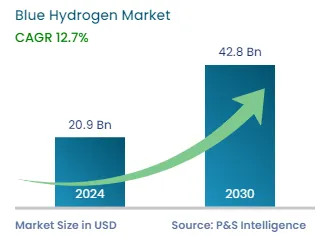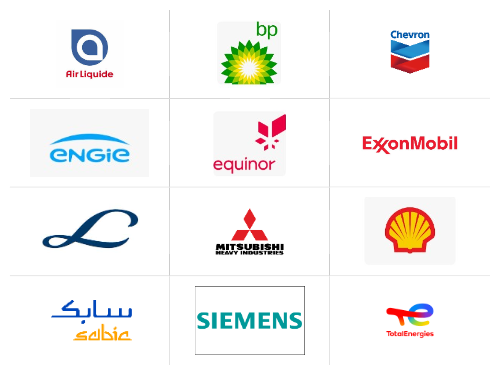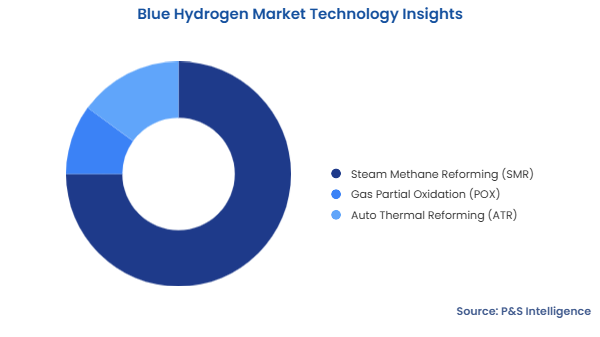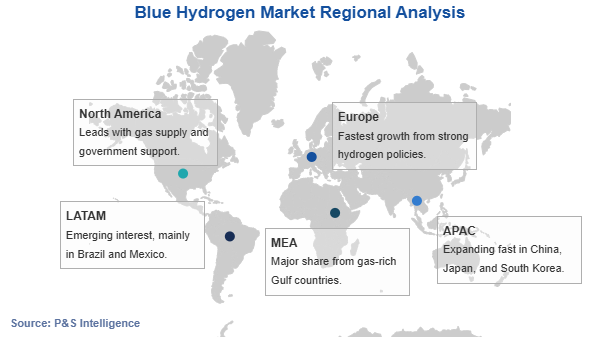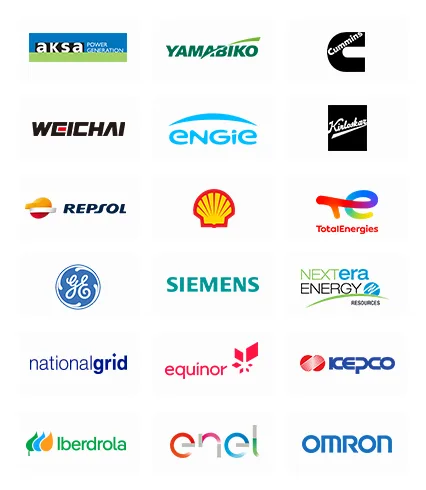Blue Hydrogen Market Future Outlook
The blue hydrogen market revenue was USD 20.9 billion in 2024, and it is expected to witness a CAGR of 12.7% from 2025 to 2032, reaching USD 53.8 billion in 2032.
Blue hydrogen is often promoted as a low-carbon fuel for generating electricity, powering automobiles, and heating buildings and a medium for storing energy.
The high crude oil price volatility and excessive taxes on gasoline and diesel have led to a sharp rise in their cost. Additionally, because of the rising demand and a shortage of supply, crude oil prices have risen significantly. Crude oil shipping costs are also rising, which further makes gasoline and diesel dearer to the masses. As a result, there is a growing need for alternative fuels, such as hydrogen.
Currently, most H2 produced is gray, meaning it is derived from hydrocarbons, primarily natural gas. As a result, the steam–methane reforming process is necessary, which produces carbon emissions. While the blue variant uses hydrocarbons in a similar way, it also employs carbon capture, utilization, and storage (CCUS) technology to decrease its harmful impact on the environment. On the other hand, the green alternative, which is often created by electrolyzing water, has no emissions and is produced using renewable energy.
Decarbonization strategies are being adopted across industries due to the growing concerns over climate change and pollution. In order to achieve the net-zero emission target by 2050, eco-friendly fuel production is burgeoning. Apart from this, energy efficiency, renewable energy, and CCUS are envisioned as the key pillars for decarbonizing the global energy system.
In hard-to-decarbonize sectors, such as heavy industries (particularly steel and chemicals), heavy-duty road transport, shipping, and aviation, where direct electrification is difficult, hydrogen fuel is essential for lowering greenhouse emissions. Here blue hydrogen is one of the eco-friendly natural-gas-derived H2 variants, for further cutting down the emissions during its production via the steam–methane reforming process.
The use of the gas in chemical manufacturing, refining, and other industrial processes has been driven by a significant switch from traditional fuels to carbon-neutral substitutes. In order to facilitate the adoption of CCUS technology for the production of hydrogen, government authorities are developing new policies and programs. For instance, companies are restricted by the stringent government regulations to keep the emission of greenhouse gases (GHG) from diverse production processes to the minimum.
